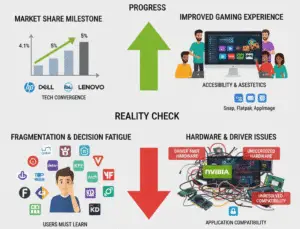
Cloud Computing in 2025: The Future of Digital Transformation
Introduction: Why Cloud Computing Matters More Than Ever
By 2025, cloud computing won’t just be a tech buzzword—it will be the invisible backbone powering everything from AI assistants to self-driving cars. Imagine accessing supercomputing power as easily as turning on a faucet. That’s the cloud’s promise: instant, limitless, and affordable computing for everyone.
This guide breaks down:
What cloud computing really means
5 game-changing cloud trends for 2025
Real-world examples you use daily
How businesses and individuals benefit
What is Cloud Computing? (Explained Simply)
Cloud computing means storing and accessing data/programs over the internet instead of your computer’s hard drive. It’s like:
Netflix (streaming movies from the cloud)
Google Docs (editing files online)
Zoom (video calls powered by remote servers)
Key Characteristics:
On-Demand – Get computing power instantly
Pay-as-You-Go – Only pay for what you use
Access Anywhere – Work from any device
Automatic Updates – No manual software upgrades
5 Cloud Computing Trends Dominating 2025
1. AI-Integrated Cloud Services
Example: ChatGPT-style tools built into cloud platforms
Impact: Small businesses can add AI features without coding
Player to Watch: AWS SageMaker, Google Vertex AI
2. Edge Computing Goes Mainstream
What it Means: Processing data closer to users (e.g., smart traffic lights)
Example: Tesla Autopilot making instant decisions without waiting for cloud servers
Benefit: Near-zero latency for critical applications
3. Quantum Cloud Computing
Breakthrough: Some cloud providers will offer quantum computing access
Use Case: Pharmaceutical companies simulating molecular structures
Early Adopter: IBM Quantum Experience
4. Green Cloud Initiatives
Problem: Data centers consume 1% of global electricity
Solution: Microsoft’s underwater data centers (40% more efficient)
2025 Goal: Major providers to use 100% renewable energy
5. Industry-Specific Clouds
Healthcare Cloud: HIPAA-compliant patient data systems
Manufacturing Cloud: Real-time factory monitoring
Example: Siemens Industrial Cloud for smart factories
Real-World Cloud Examples You Already Use
| Service | Cloud Benefit |
|---|---|
| Spotify | Stores 100M+ songs in the cloud |
| Uber | Matches riders/drivers in real-time |
| Airbnb | Handles 6M+ listings globally |
| Online Banking | Processes transactions securely |
Business Benefits in 2025
Cost Savings – No need for expensive servers
Disaster Recovery – Automatic backups
Global Scaling – Serve customers worldwide instantly
Security – Cloud providers invest billions in protection
Case Study:
Netflix saves $1B/year by using AWS instead of building data centers.
Challenges to Overcome



Future Predictions (Post-2025)
Brain-Cloud Interfaces – Elon Musk’s Neuralink potential integration
Holographic Cloud – Microsoft Mesh for 3D collaboration
Self-Healing Clouds – AI that fixes outages automatically
How to Prepare for the Cloud-First Future
For Businesses: Start migrating legacy systems
For Developers: Learn cloud-native technologies (Kubernetes, serverless)
For Everyone: Understand cloud security basics
Conclusion: The Sky’s the Limit
By 2025, cloud computing will be as essential as electricity—powering innovations we haven’t even imagined yet. Whether you’re a student, entrepreneur, or tech enthusiast, understanding the cloud means understanding the future.




